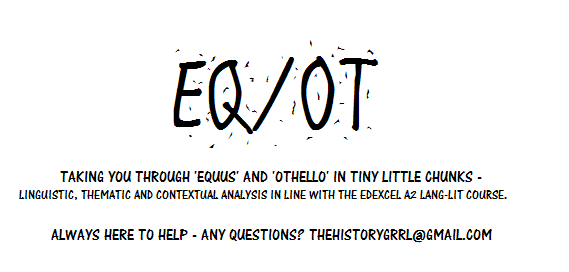The traditional tragic structure can most easily be seen in Freytag's Triangle, otherwise known as "the tragic ark".
This shows the advancement of a tragedy, from beginning to end:
- The deisis shows the rising action and building tension
- The peripateia is the crisis point, at which there is no turning back, and the action has reached its climax
- The denouement and lusis show the falling action and the unravelling of the plot to the end, or resolution, when catharsis, or a purging of emotions, occurs.
Tragedy of this style is defined as the downfall of a character of great stature because of their own flaws, or hubris, and always results in a death.
In some ways, therefore, 'Equus' can be seen to fit this structure - although no death occurs, and the character most like a tragic hero, Dysart, has no tangible hubris, given that he recognises his flaw before he falls because of it.
Now that's all covered, it's time for a break! Deep breaths, cups of tea and Doctor Who, mayhaps? Enjoy :)
- HistGrrl x

No comments:
Post a Comment